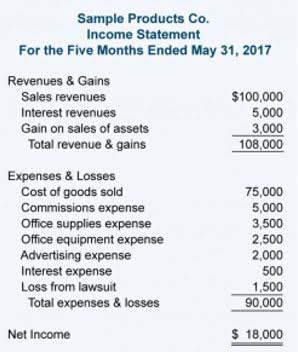

This results in lower taxable Food Truck Accounting income during periods of rising prices, effectively reducing the company’s tax liability. The tax savings can be reinvested into the business, fostering innovation, expansion, or debt reduction. However, it’s important to note that LIFO is not permitted under International Financial Reporting Standards (IFRS), limiting its use to companies that primarily report under U.S. This results in deflated net income costs in inflationary economies and lower ending balances in inventory compared to FIFO.


LIFO, Inflation, and Net Income
This can improve financial ratios such as the current ratio and the quick ratio, which are critical indicators of a company’s short-term financial health. Enhanced asset values can also positively impact a company’s borrowing capacity, as lenders often look at the strength of the balance sheet when making lending decisions. On the balance sheet, FIFO results in a higher valuation of ending inventory. This is because the remaining inventory consists of the most recently purchased, and typically more expensive, items. A higher inventory valuation can enhance the company’s asset base, improving financial ratios such as the current ratio and working capital.
- For spools of craft wire, you can reasonably use either LIFO or FIFO valuation.
- When a business uses FIFO, the oldest cost of an item in an inventory will be removed first when one of those items is sold.
- As you can see there is a heavy focus on financial modeling, finance, Excel, business valuation, budgeting/forecasting, PowerPoint presentations, accounting and business strategy.
- On the other hand, a company that uses the FIFO method will be reporting a higher net income and hence will have a greater amount of tax liability in the near term.
- Companies must carefully consider their ability to meet these tax liabilities without compromising operational efficiency or growth initiatives.
- You’re allowed to go back to LIFO only if the IRS gives specific permission.
FIFO vs. LIFO Inventory Explained


This approach can be particularly beneficial during periods of rapid price increases, helping companies manage their financial resources more effectively. The ending inventory is valued at older costs, which are typically lower during inflationary periods. This can result in a lower inventory valuation, potentially understating the company’s asset base. While this might seem disadvantageous, it can also mean that the company is not overvaluing its assets, providing a more conservative and perhaps realistic view of its financial position. LIFO, in contrast, tends to fifo lifo produce a higher COGS during inflationary periods, as it matches the most recent, and often higher, costs against current revenues.
Weighted Average Cost


Businesses would select any method based on the nature of the business, the industry in which the business is operating, and market conditions. The last in, first out (LIFO) accounting method assumes that the latest items bought are the first items to be sold. With this accounting technique, the costs adjusting entries of the oldest products will be reported as inventory. It should be understood that, although LIFO matches the most recent costs with sales on the income statement, the flow of costs does not necessarily have to match the flow of the physical units.
- The FIFO method assumes that the oldest inventory units are sold first, while the LIFO method assumes that the most recent inventory units are sold first.
- Let’s say you’ve sold 15 items, and you have 10 new items in stock and 10 older items.
- In addition, consider a technology manufacturing company that shelves units that may not operate as efficiently with age.
- The First In, First Out FIFO method is a standard accounting practice that assumes that assets are sold in the same order they’re bought.
- The costs of buying lamps for his inventory went up dramatically during the fall, as demonstrated under ‘price paid’ per lamp in November and December.
- Last in, first out or LIFO, is a method of accounting for valuing inventory.
- Weighted Average Cost (WAC) calculates the average cost of all items available in your inventory over a period of time.


However, if inventory remains stagnant for a few years, there can be a significant discrepancy between cost of goods sold and market value when sales resume. LIFO isn’t practical for many companies that sell perishable goods and doesn’t accurately reflect the logical production process of using the oldest inventory first. All companies must determine how to record the movement of their inventory. The amount a company pays for raw materials, labor, and overhead costs is continually changing. For this reason, the amount it costs to make or buy a good today might be different than one week ago. One of its drawbacks is that it does not correspond to the normal physical flow of most inventories.
